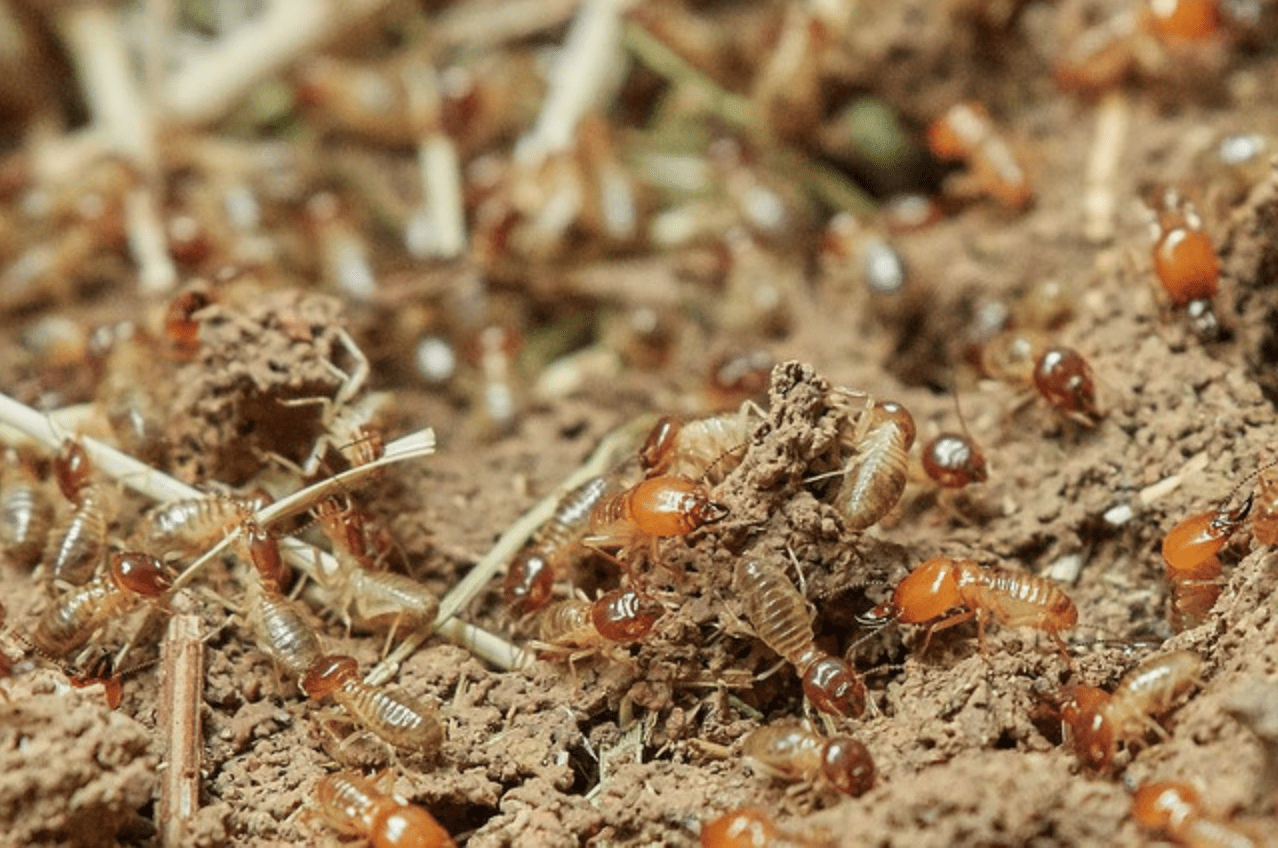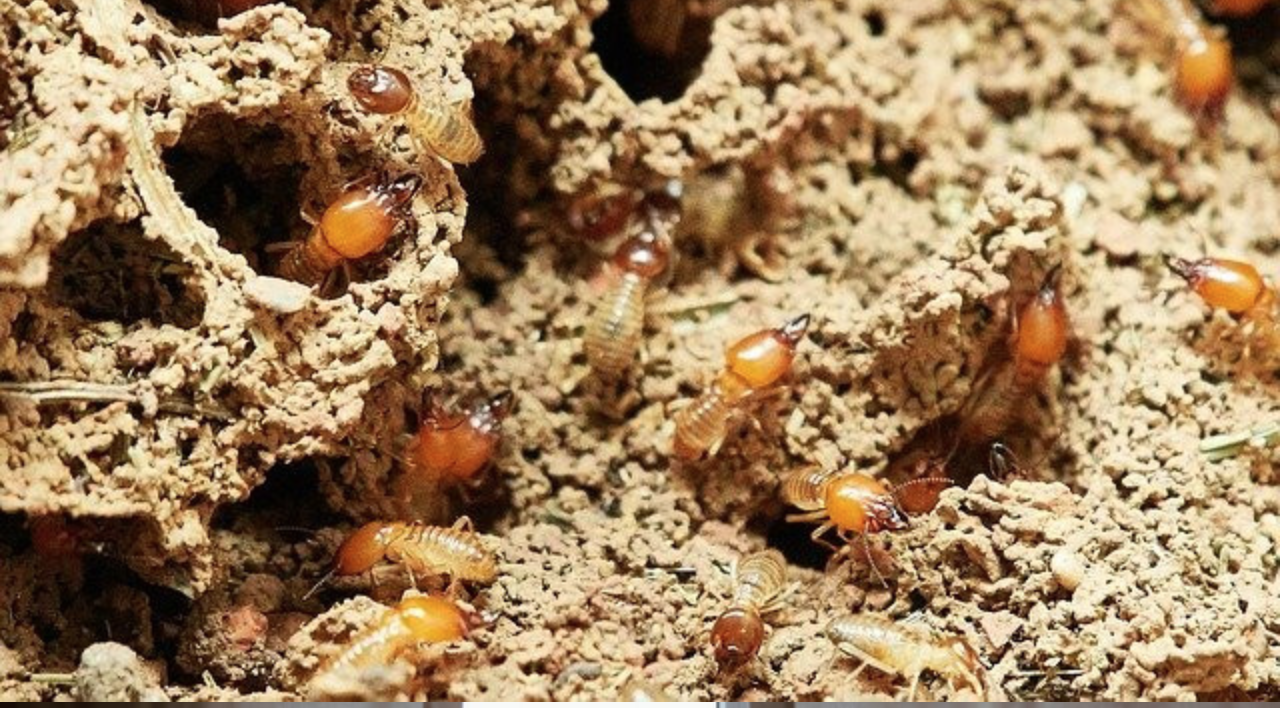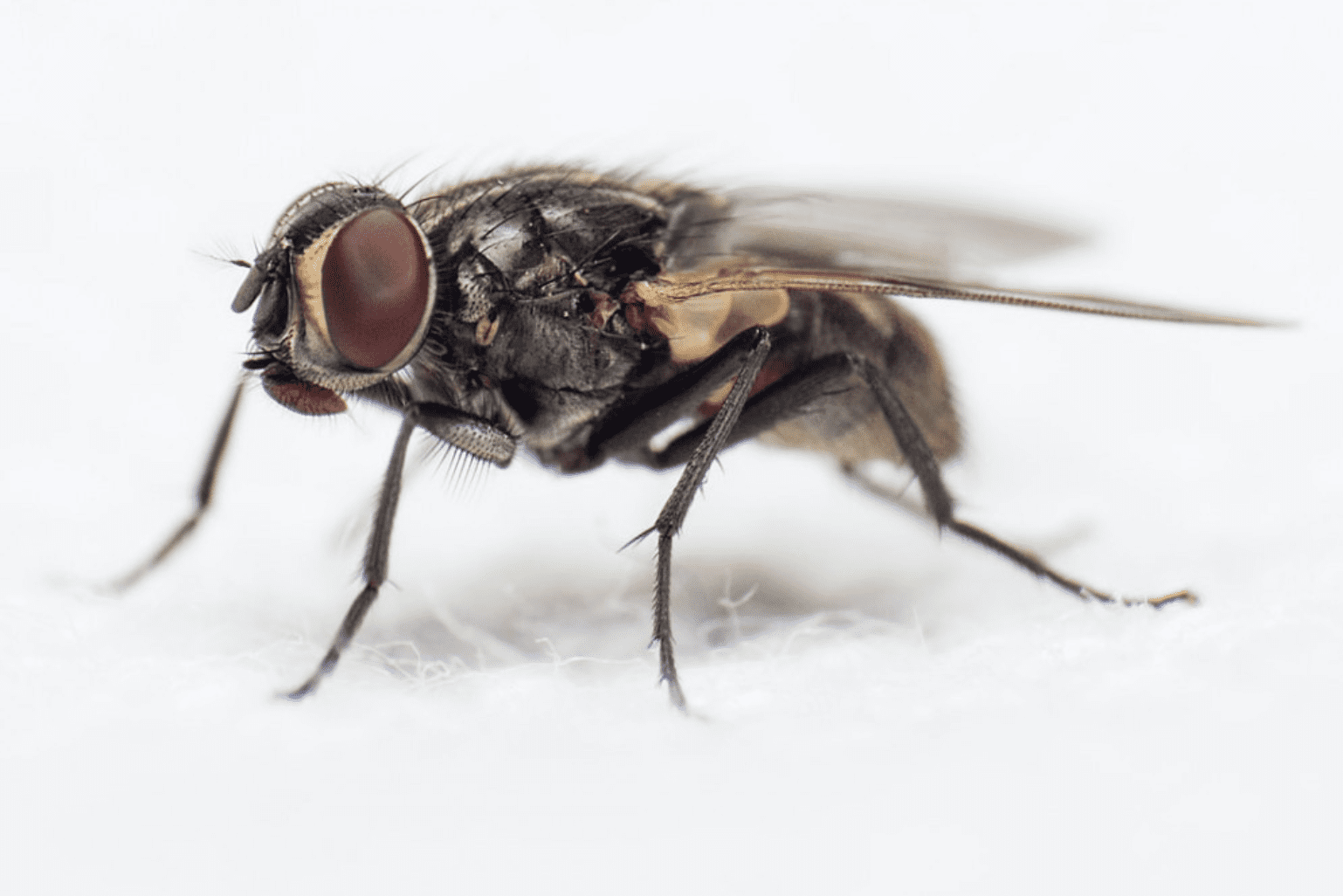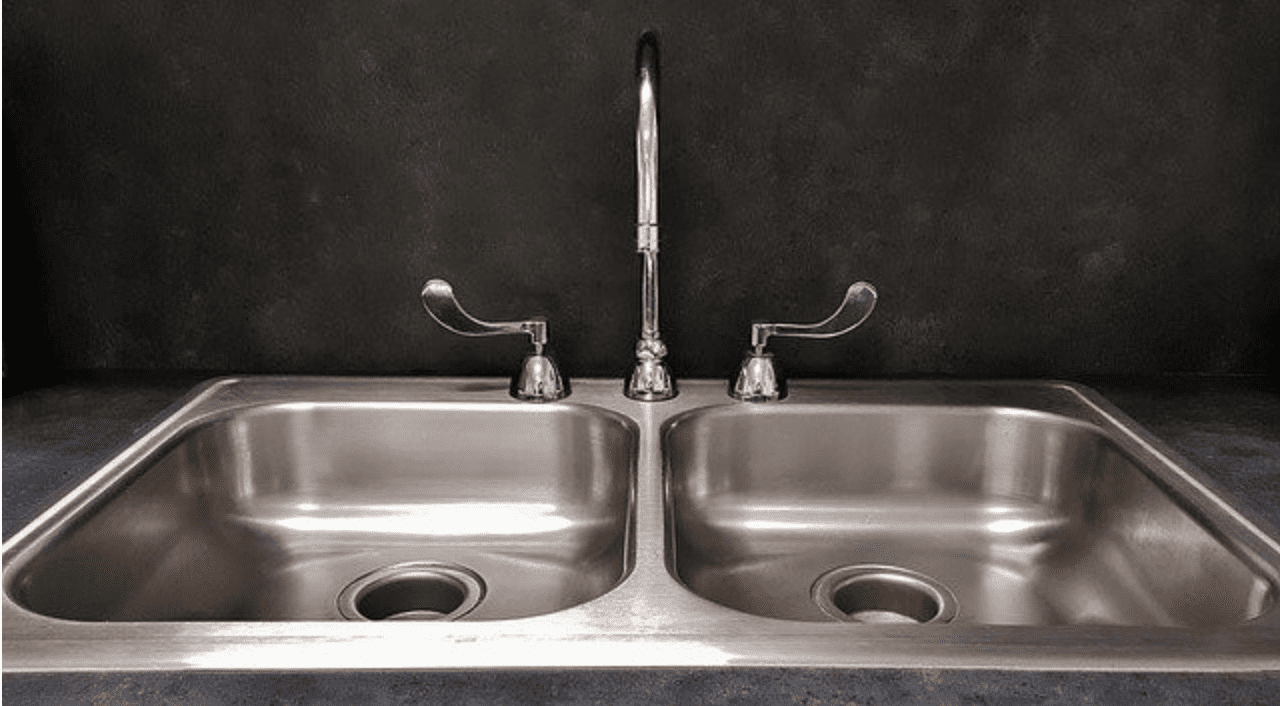Termites are not just annoying and unwanted guests in our homes; they present a real danger. The damage they do nationwide is enormous, measured in billions of dollars. Because it’s often hard to see them crawling your house walls, you should always watch out for the top signs to prevent more extensive damage.
Usual signs of termite infestation are termite droppings, swarming, termite wings, mud tubes, wood damage, and sounds that termites make. Some of these top signs can seem obvious, but if they occur in the basement or an attic, they can remain hidden for quite some time.
When we bought our new house in Lewes, it came with termite bait stations, which I think are an excellent preventive measure for termites infestations. However, I want to be aware of the top signs to watch for just in case the termite bait stations fail.
Here is a list of the most common signs of a potential termite infestation problem.
1. Termite Droppings
Drywood termites live and nest within wooden objects. As they go through the wood and digest it, they have to leave their feces somewhere.
Termites are “clean” animals that take care of their tunnels, and feces are regularly removed through small openings on the wood surfaces. These tiny holes are also a sign of termite infestation.
Termite droppings look like tiny wooden pellets, and you can typically see small piles of them next to the wall, on the floors. Be careful, as it’s easy to confuse the often salt and pepper colors for dust, dirt, or something similar, especially in basements and attics.
If you notice any wooden residue on the floor near the walls, inspect it, or call an expert to do it for you.
2. Swarming
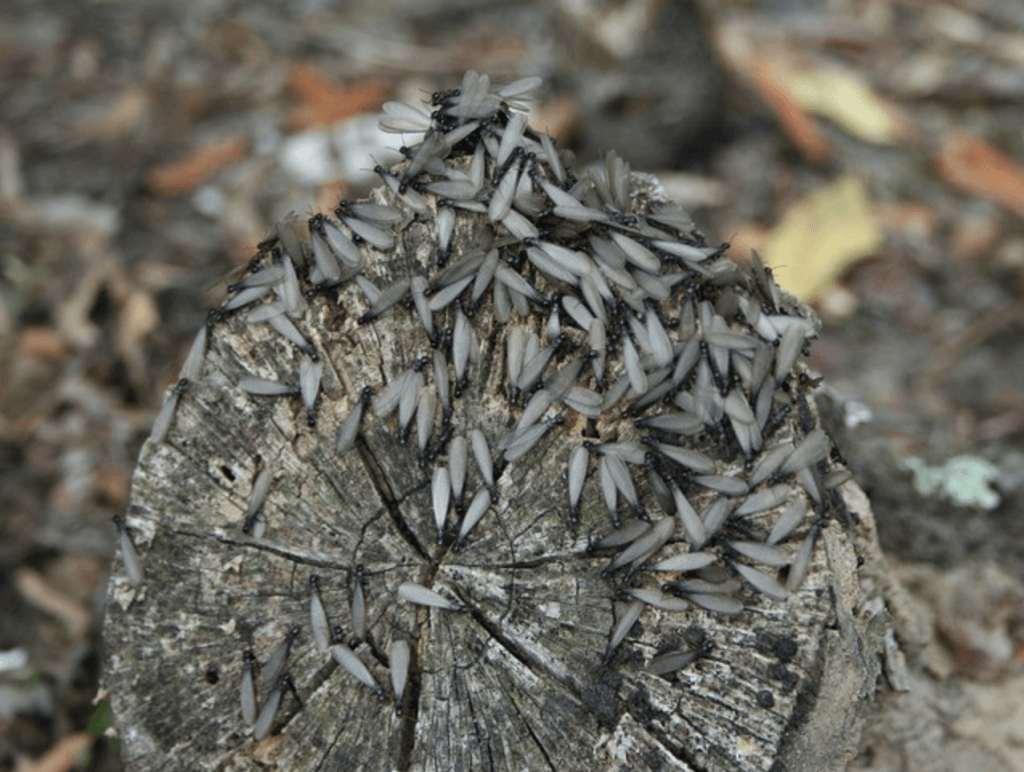
Swarmers are flying termites that reached their adulthood and are ready to leave the nest, find a new home, and reproduce. Swarmers can potentially make new termite colonies. When a colony reaches a certain size or number of termites, swarmers will take off.
Swarmers can be present anywhere, but you will most commonly find them near doors and window frames.
What season termites swarm depend on the type of termite:
- Subterranean termites like to swarm during the day in spring
- Drywood termites prefer to swarm at the end of summer
- Dampwood termites, which are common along the Pacific coast like to swarm anytime in the summer.
Sometimes you can see swarmers outside, and that doesn’t necessarily mean that you have an indoor problem. They can be in search of a new nesting place. Swarmers seen outside should not be ignored; they are probably nearby for a reason.
If you see swarmers around your house, you should make a thorough inspection of the inside.
3. Termite Wings
The goal of swarmers is to find a new location to reproduce. When a swarmer finds a wooden area in your house it likes, it will shed its wings and feed as it excavates through the wood into its new home.
You may not have been in the house to see the swarmers, but if you see loose wings around your house, they were there, and they may now be in your walls.
Shedded wings look similar to fish scales, but the shape is slightly different.
4. Mud Tubes
Not all clues of termite infestation are presented on wood. Some of them can be seen from outside, and mud tubes are one of those signs. These tubes have a small diameter, and they look like very long pencils or straws that have been buried under the soil surface. You can see them in locations where the soil gets in contact with the house, near trees, or sheds.
Subterranean termites nest underneath the surface and spend some of their time there. These tunnels are an excellent way for termites to stay protected from external conditions like dry air and low temperatures. Not all termites make mud tubes, or at least some of them won’t be visible to you. Regularly inspect the area around the house and search for any of these signs.
What does a termite tube look like? This video shows what termite mud tubes look like and why it is important not to ignore them.
5. Blisters in the Wood
Wood damage is one of the first signs homeowners think of when someone mentions termites. There are different kinds of wear on the wood, and one of them is blisters.
Blisters may indicate the presence of termites that feed from within the wooden surface or below it. Subterranean termites frequently cause this kind of damage, and some homeowners mistakenly think they have a moisture problem. These termites usually damage the subflooring wood from below, they cause blisters on top, and you can’t see them unless you remove the flooring. If you ignore the problem, termites can cause severe structural damage to the bottom part of your home.
6. Hollowed Wood
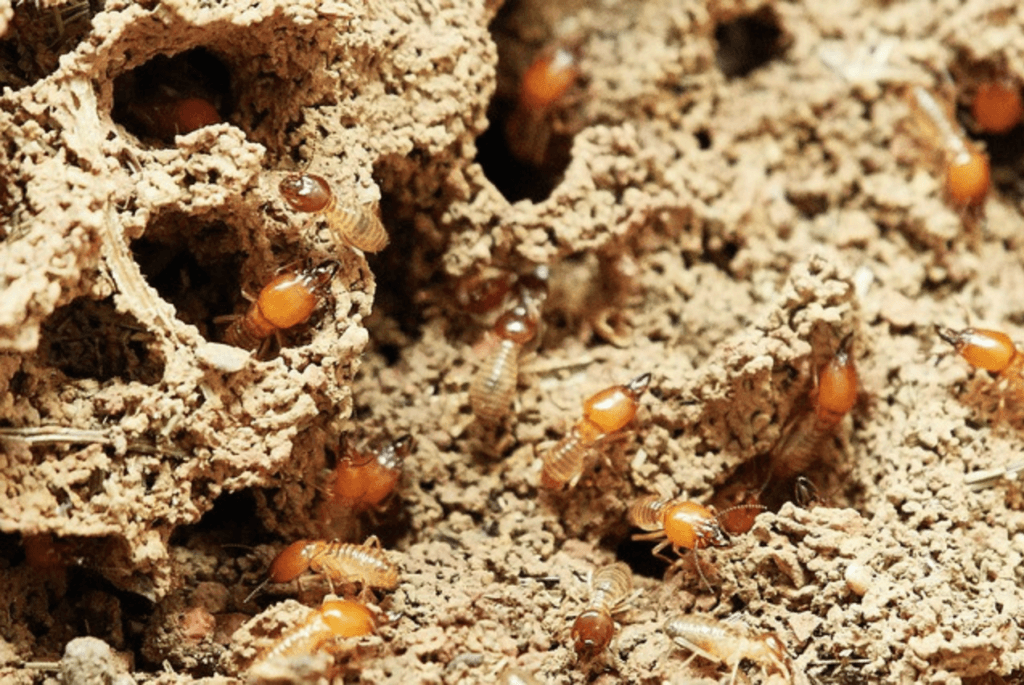
Termites feed on cellulose in the wood by chewing the wood and travel through it, leaving tunnels behind. Wood eaten by termites has multiple tunnels looking like a honeycomb.
This damage is frequent in walls and wooden boards. Hollowed wood is hazardous if ignored because it can break easily, which is especially dangerous on load-bearing structures.
It is hard to notice hollowed wood unless you knock on it. Instead of a solid and full sound, you’ll get a “hollow” sound. You can test wooden structures by knocking on them. If you hear any changes, contact a professional exterminator to assess the problem. Unlike ants and similar pests, termites can cause a lot of damage.
7. Sagging Floors and Ceilings
When termites attack your house, you will notice some changes in how your floors or ceilings look and feel. If the floors or ceilings sink, that means that the damage is severe enough to cause structural changes.
Unfortunately, this is a sign of a serious problem. This is also one of the signs that frequently gets mistaken for moisture problems. To repair the damage, you will have to replace most of the damaged wood boards. To be sure, look for indications of holes or grooves that frequently occur together with this problem. Luckily, by recognizing other signs, you will probably avoid this problem. However, it can happen in vacation homes and similar locations that are rarely visited.
8. Nearby Wood Damage
Termites spread like a contagious disease. If you have woods or any wooden structures around the house, inspect them regularly. Search for termite tunnels and other signs that suggest an infestation.
If termites are present near the house, there is a high chance they are present indoors. Tap on the wood to test it yourself, and search for the same signs you would search indoors.
If you suspect an infestation, consult with a local exterminator. They can do a thorough inspection for you. Luckily, there are ways to inspect those areas by using electronic devices that show internal damage.
Ask around the neighborhood to learn of possible infestation nearby, or warn your neighbors about a potential problem you know about. If the person next door has a termite infestation, you should inspect your house.
9. Tight Doors and Windows
Doors and windows should be able to close correctly and fit well without much effort. If you notice that it is harder to close them and feel that doors/windows are “too large” to fit into the frame, it can be a sign of termites.
While chewing the wood and going through it, termites produce moisture that causes the wood to expand. This problem is also frequently mistaken for moisture problems. Besides, tunnels in the wood keep the humidity inside and are not able to ventilate. This problem can be noticed on windows that are not frequently opened, like those in basements and attics.
10. Discolored Drywall
Termites attack drywalls from inside, and it is almost impossible to see them. Sometimes, their infestation can cause discoloration.
As they dig tunnels, depending on the drywall itself and how deep the tunnels are, you can see faint lines. Those lines may be the sign of tunnels inside. If the problem is severe enough, you will see the whole network of those tunnels. Additionally, paint can start falling off or present signs of damage.
Same as many signs mentioned before, the discoloration can be caused by moisture too. Try not to ignore it. If you try to remove the moisture and you are not successful, it may be that you have a serious termite problem.
11. Unusual Sounds
Termites can be loud. Not as loud as a large truck passing by the street, but louder than many other pests. When it is quiet inside, you may actually hear them. You will hear a tapping sound produced mostly by male termites.
Unfortunately, this is a sign of a severe infestation. Tunnels are probably everywhere, and the wood has to be hollow to hear their movement. Some homeowners describe this noise as “clicking sound coming from the wall.”
If you think you hear something from the wall, you are not going crazy, and ignoring it is not advisable. Turn off the tv or any loud devices, like a washing machine, and listen carefully. If you still hear it look for other termite infestation signs.
Video Summary of Top Signs to Watch For
How Do I Recognize a Termite When I See One?
Unless you are an entomologist, you probably don’t know the difference between termites and flying ants. You know by now that an important sign of a termite infestation is the swarm of flying insects. But, not all swarming insects are termites. These are a few clues to distinguish termites from ants.
Termites:
- Have a lighter color
- Antennae are straight and not bended
- Don’t have a thin waste like ants do
- Have wings that are the same size while flying ants have one wing larger than the other
The video below demonstrates the difference between termites and flying ants.
Related Posts:

